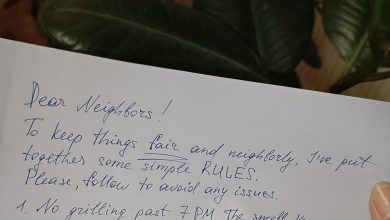
Symbiosexual attraction: What it is and why it matters
In a world where identity is as multifaceted as a kaleidoscope, new terms emerge to encapsulate nuanced experiences. One term gaining traction is symbiosexual, an attraction to the energy and dynamics shared between people in a relationships – and unicorns.
Relationships are evolving, and so is our understanding of how people connect and express love. One concept redefining the way we view attraction is symbiosexual attraction. But what does it mean?
Let’s dive into this fascinating topic that’s stirring conversations about identity and connection.
What it means
Researchers at Seattle University identified a fascinating new form of sexual attraction known as “symbiosexuality.”
Published in the “Archives of Sexual Behavior,” the study describes symbiosexuality as “an attraction to the energy, multidimensionality, and power shared between people in relationships.”
Simply put, it revolves around the idea of being drawn to the shared dynamics of a relationship involving two or more people.
Dr. Sally Johnston, an adjunct professor of anthropology and sociology who conducted the study, told the New York Post, “We need to rethink the nature of human attraction and desire as only one-to-one experiences.”
Synergy
Unlike traditional relationship models, symbiosexual individuals are captivated by the “synergy” between all parties in a group dynamic rather than focusing solely on individual traits.
This attraction emphasizes mutual respect, harmony, and the flourishing of everyone involved.
It’s not merely about physical or emotional connections – it’s about how the collective relationship creates something extraordinary.

One study participant said she was drawn to “[a couple’s] cohesiveness, you feed off their energy, their attraction to each other…there’s an interplay between [them].”
A second person, known as Ellis, says he was attracted to the pre-existing bond in a successful relationship: “There’s something really nice to me about saying okay, well, these two people already know how to be in a relationship in a really healthy and great way and that’s attractive,” he said.
And another described how “delicious” couples are when their different yet complementary “energies are flowing together.”
Breaking down the study, Forbes explains that the participants reported the following qualities most interesting:
- Energy and cohesion between the two individuals
- The chemistry and magnetism of a couple
- Multidimensionality, like shared experiences, emotions and histories between the partners
- Complementary power and strength of people in a partnership
- Physical vibe and attractiveness as a unit
- and fun dynamics of some couples
- Gender fluidity
Symbiosexual vs. polyamory
While symbiosexual attraction often overlaps with polyamorous relationships, they are distinct concepts, each with its unique focus and dynamics.
Symbiosexuality: An attraction to the energy and dynamic shared between people in an existing relationship. The focus is on the relationship itself as a unit, rather than the individual members of the relationship.
Polyamory: Engaging in or being open to multiple consensual romantic or sexual relationships simultaneously. The emphasis is on having separate relationships with multiple partners.
Unicorns
In the study, Johnson attempts to unravel the purpose of the “unicorn” in multi-partner relationships.
And she’s not referring to the mythical flying horse with the single horn.
According to VeryWellMind, “a unicorn is a person who is willing to join an existing couple,” someone “who engages in sexual activity with a couple but does not participate in other aspects of the relationship.” The unicorn, considered a secondary partner to the primaries, also follows “whatever boundaries and rules the couple has established.”
Despite the sexual benefits, Johnson suggests the third party receives poor treatment in a role she says is “inherently unethical.”
Attempting to determine how a unicorn fairly fits into a preexisting relationship, she writes that the title evokes “notions of myth and fetish,” and “perpetuates invalidation of and discrimination against people who seek these dynamics whether they are motivated by symbiosexual attraction or not.”
Lastly, Johnson says that “recognition and validation” of the new identity will offer support from “the communities specifically formed to support people with marginalized sexual and relationship orientations (such as the polyamorous community) and in mainstream community settings.”
Symbiosexual attraction celebrates interconnected relationships, redefining how we understand love, attraction, and connection. It reminds us that relationships aren’t just about individuals but about the magic created when people come together.
What are your thoughts on this new sexual identity?




